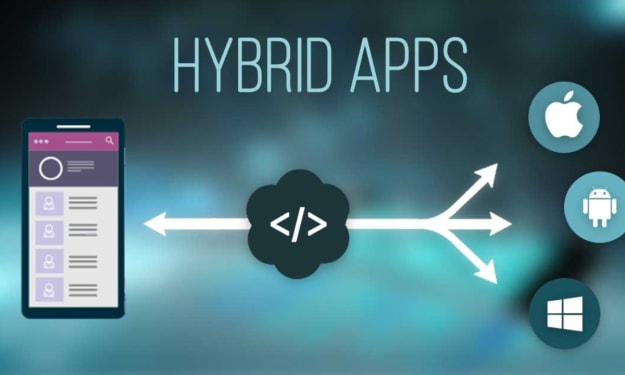Apple Vision Pro is not just for gaming
With the Apple Vision Pro headset and its first spatial visionOS, a new era begins

British spelling
---
The wait is over. At a starting price tag of $3,499 with 256GB of storage, Apple Vision Pro will become available beginning Friday, 2 February at all Apple Store locations in the United States and the U.S. Apple Store online. The rest of the world, well, will have to wait a little longer.
The era of spatial computing begins! At least for some
First, let’s have a quick look at what spatial computing is. Spatial computing merges the digital and physical realms by embedding virtual elements into the real world resulting in an advanced human+computer interaction.
We can say that spatial computing is an immersive technology that uses augmented reality (AR), virtual reality (VR), mixed reality (MR), and extended reality (XR) to enhance human+computer interactions by letting the human (that is, you) interact with a computer in a seamless and immersive way.
With the launch of Apple Vision Pro, Apple is initially opening a gateway for developers to create applications that will serve various industries beyond gaming and the entertainment industry.
What I am saying is that for those saying that Vision Pro is just for gamers I would recommend them to think again simply because the Vision Pro is not just for gaming. And here is why.
Let’s have a look at how spatial computing and Apple Vision Pro applications can be used across industries
Healthcare
Virtual Reality is already being used in medical and veterinary training, patient care, mental health treatments, and surgery planning. Healthcare professionals can visualise complex medical data in 3D facilitating accurate diagnostics and personalised treatment plans. Surgeons use AR to overlay medical information onto a patient during surgery, thus improving precision and minimising risks. I expect VIsion Pro to be a highly developed and advanced piece of high-tech surpassing other existing headsets. Vision Pro could be used by medical professionals for AR-assisted surgeries, allowing surgeons to access critical patient information in real-time while performing procedures.
Education
In education, spatial computing can create dynamic, interactive and immersive learning environments (IILEs) where students can explore historical events in augmented reality, dissect virtual organisms, or engage in collaborative virtual spaces for hands-on experiences. Interactive education enhances understanding and increases retention of complex subjects.
Manufacturing and Design
Spatial computing can transform the manufacturing landscape by enabling engineers and industrial designers to visualise and manipulate 3D models in real-time. This accelerates prototyping, streamlines product design processes, and enhances collaboration among global teams through virtual spaces.
Retail and Marketing
Spatial computing allows customers to visualise products in their real-world environment through augmented reality applications. Through virtual try-ons and interactive displays consumers can have personalised shopping experiences and engage with brands. In turn, this increases customer satisfaction and sales, of course.
Real Estate
From virtual property tours allowing potential buyers to explore homes and commercial spaces remotely to architects and developers using AR and VR for immersive walkthroughs to help their design and planning of structures, there is a lot Vision Pro can do in this space.
Gaming and Entertainment
Perhaps the first thing that comes to mind when thinking about use cases for spatial computing is gaming and entertainment. Immersive virtual environments and interactive elements can create the best of the experiences adding a new dimension to the entertainment industry. Despite gaming and entertainment being pretty obvious when you think about what you could do with your Vision Pro, there is so much more than spatial computing and the Apple Vision Pro can do for other industries.
Great, right? Right.
Basically, all this has been done for several years now using virtual reality, augmented reality, and virtual learning environments. What Apple seems to be doing now is replacing all the terminology we have used so far and using spatial computing instead.
Since I have personally experienced all this already for over 10 years in all the industries mentioned above and more including NASA training for astronauts, firefighters training, automobile engine design, and a hot air balloon travel experience to name a few, I am very curious to see how the Vision Pro is going to improve what already exists.
Spatial computing is simply Apple’s way of referring to VR, AR, MR, XR, and VLEs. How the Vision Pro will differentiate itself to justify the tag price is to be seen.
Apple’s plans for the future of Vision Pro
Is Vision Pro going to slowly be replacing the physical Apple devices in the Mac family, moving all the apps and functions to visionOS? Designing a better, lighter, more fashionable, and more practical headset in the future? One that can be folded perhaps, and wireless, of course?
If spatial computing is the future of computing, in the future, we should be able to carry a less bulky Vision Pro headset with us in the same way we carry an iPhone today. Just then, I would believe the Vision Pro is, in fact, revolutionary.
Unfortunately, I have not been able to order my own Apple Vision Pro. I will certainly be testing one in the Apple Store to compare with previous headsets and experiences I’ve had before. I can't wait!
About the Creator
Susan Fourtané
Susan Fourtané is a Science and Technology Journalist, a professional writer with 18 years experience writing for global media and industry publications. She's a member of the ABSW, WFSJ, Society of Authors, and London Press Club.






Comments
There are no comments for this story
Be the first to respond and start the conversation.